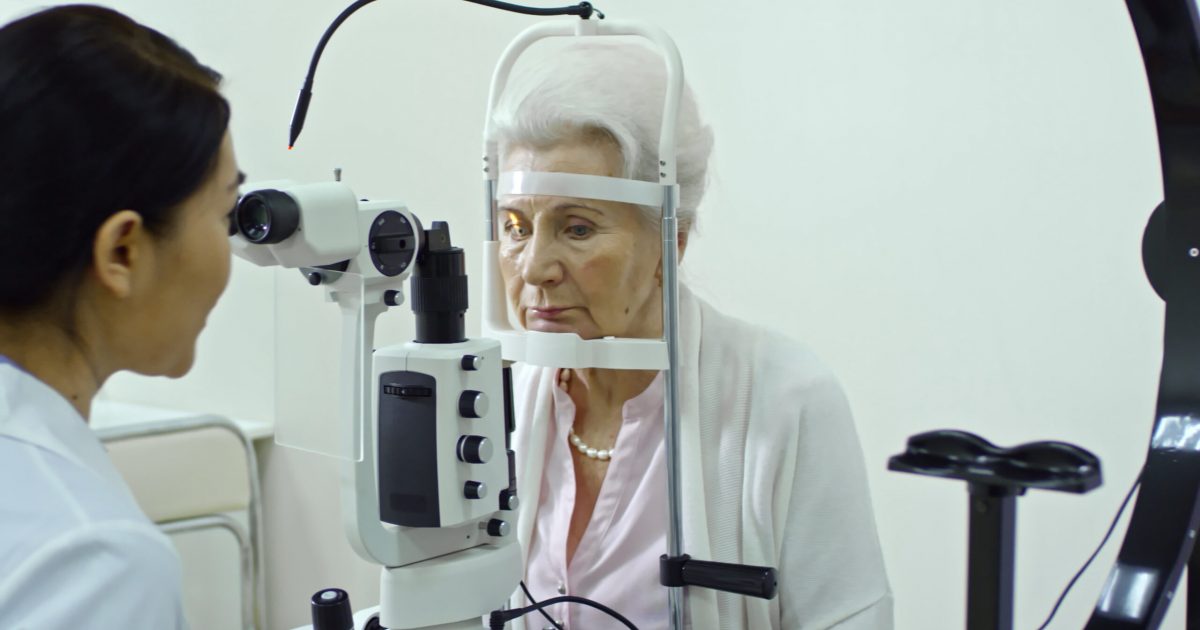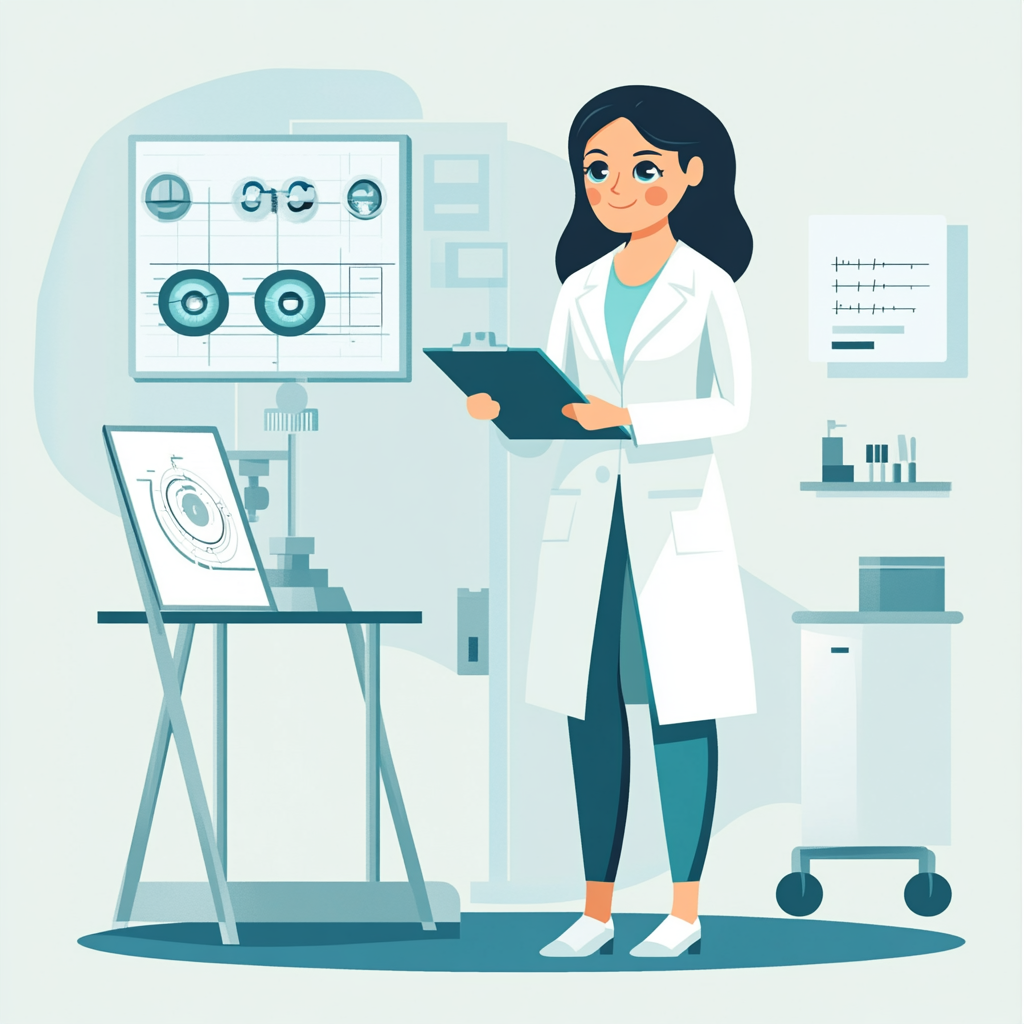Ensuring Consistency, Clarity, and Action Through Repeated Messaging
Cataract surgery is one of modern medicine’s most common and successful procedures. Yet, many ophthalmology practices face challenges in educating patients about cataracts, how surgery can help restore vision, and the benefits of premium lenses or advanced technologies. When a patient education process does not deliver clear and consistent information, patients may feel confused, overwhelmed, or hesitant to move forward—especially if they are weighing the cost and value of premium services.
In this blog post, we’ll explore why a standardized patient education process is essential for cataract surgery, how repeated messaging (the “Rule of 7” in marketing) can improve patient decisions, and what steps your practice can take to ensure every patient receives the same high-quality information. We’ll also offer practical examples and resources to hit the ground running.
1. The Importance of Standardizing Patient Education for Cataract Surgery
1.1 Consistency Across the Patient Journey
Cataract surgery involves multiple touchpoints, from the initial phone call or online inquiry to pre-operative consultations, testing days, the actual procedure, and follow-up visits. When you standardize your messaging at each step, you reduce confusion and ensure that every patient hears the same core information—regardless of which physician, technician, or staff member they speak with. Consistency instills confidence and fosters a sense of professionalism and trust in your practice’s expertise.
1.2 Highlighting Premium Services
Standardization is vital if you offer premium lens implants (e.g., toric lenses for astigmatism, multifocal or extended-depth-of-focus lenses for improved range of vision) or advanced technologies (such as femtosecond laser-assisted cataract surgery). Patients may not fully understand these premium offerings or why they cost more if your practice does not systematically explain value and benefits. Clear, repeatable messaging helps your staff uniformly present these options so patients can make informed decisions.
1.3 Reducing Liability and Ensuring Compliance
When it comes to any surgical procedure, clear communication is key to mitigating risk. Inconsistent or inadequate explanations about potential risks, post-operative care, and realistic expectations can lead to misunderstandings—or worse, unsatisfactory surgical outcomes. A standardized education protocol ensures legal and ethical compliance by documenting that patients were given consistent information about their procedure. This approach can also help reduce cancellations or no-shows because patients better understand what they’re signing up for.
1.4 Increasing Efficiency in a Busy Practice
A chaotic, ad hoc approach to patient education can waste staff time. Without standard protocols—like a step-by-step cataract surgery checklist, consistent brochures, or pre-written answers to FAQ—team members might scramble to explain the same details over and over. Standardization streamlines these educational interactions, letting staff and physicians operate more efficiently and leaving more bandwidth for personalized patient care.
2. The “Rule of 7”: Why Repeated Messaging Matters
Marketing studies have long suggested that, on average, a person needs to encounter a message at least seven times before taking action or making a decision. This concept, commonly called the “Rule of 7,” has been a mainstay in advertising, brand building, and consumer psychology. Here’s why it applies to cataract surgery patient education:
-
Reinforcement Builds Trust: Each repeated message (in different formats—verbal, written, digital) reinforces the importance of the information. By the seventh time, the patient is far more likely to internalize it and feel confident in their understanding.
-
Complex Decision: Cataract surgery, while routine to us, is a significant decision for many patients. They may feel anxious, worried about cost, or uncertain about advanced lens options. Hearing the same reassuring message repeatedly helps overcome fears and clarifies benefits.
-
Retention of Details: Patients can forget much of what they hear in a medical setting—especially if they are stressed or dealing with multiple health concerns. Repeated reminders (e.g., pre-operative instructions, brochures, video links) increases retention.
-
Encouraging Action: Whether deciding between standard and premium lenses or scheduling surgery, repeated exposure to accurate, benefits-focused information helps patients move from indecision to action.
By leveraging this “Rule of 7,” your standardized patient education process ensures that critical points about cataract surgery—risks, benefits, steps, and post-operative care—are delivered consistently and repeated enough for patients to take the next step.
3. Key Components of a Standardized Education Process for Cataract Surgery
3.1 Identifying Core Topics
The first step is determining the must-have information every cataract surgery patient needs to understand. Common subjects include:
-
What is a cataract? A simple explanation of how the eye’s lens becomes cloudy over time and how this affects vision.
-
Overview of the procedure: Emphasizing the safety and success rates and the general timeline (pre-op to post-op).
-
Lens implant options: A breakdown of standard mono-focal lenses vs. premium lenses (toric, multifocal, extended depth of focus), including benefits, potential trade-offs, and cost considerations.
-
Pre-operative instructions: Eye drop usage, dietary or medication restrictions, arrival times on surgery day, and any lab tests needed.
-
Post-operative care: Proper use of eye drops, activity restrictions, follow-up schedule, possible side effects to watch for.
-
Long-term expectations: Tips for maintaining healthy vision after surgery and the potential need for enhancements or reading glasses.
3.2 Standardized Materials and Scripts
To ensure every patient receives the same high-quality information, it’s helpful to develop a library of standardized resources:
-
Printed Brochures/Handouts
-
A well-designed brochure can outline each step of cataract surgery with simple language and visual aids (e.g., diagrams of the eye and lens implant comparisons).
-
Consider referencing reputable sources like the American Academy of Ophthalmology (AAO) or the National Eye Institute (NEI) for fact sheets on cataracts.
-
-
Digital Content
-
Short, engaging videos covering the basics of cataract surgery or demonstrating how to use pre- or post-operative eye drops.
-
Informative content on your practice’s website—especially an FAQ page about insurance, premium lenses, and advanced technology.
-
-
Verbal “Cheat Sheets” or Scripts
-
Quick bullet-point lists for staff members to reference, ensuring key talking points are always mentioned.
-
Training modules or recorded role-plays for new employees so they learn the standardized approach from day one.
-
-
Checklists and Consent Forms
-
A standardized checklist for pre-operative visits ensures staff collect and provide the same information every time.
-
Consent forms should be written in plain language and include a summary of what the patient agrees to—so they’re not confused by medical or legal jargon.
-
3.3 Integrating the “Rule of 7” Within the Process
Here’s how you can incorporate repeated messaging throughout the cataract surgery journey:
-
Initial Inquiry: Whether via phone or online, front-desk staff provide a high-level overview (first exposure) and immediately send a digital brochure or email (second exposure) summarizing the basics.
-
Pre-Consultation Email or Text: A few days before the consultation, send a friendly reminder with brief points about what to expect (third exposure).
-
In-Office Consultation: Use a standardized script to discuss cataract surgery and lens options (fourth exposure). Could you hand the patient a printed brochure to take home (fifth exposure)?
-
Follow-Up Call: A technician or surgical counselor calls a few days later to answer additional questions (sixth exposure). They can reference the same bullet points from the consultation.
-
Formal Surgery Scheduling: Provide a final email with pre-operative instructions, again highlighting lens choices and what to bring on surgery day (seventh exposure).
By this point, the patient has heard and seen the core messages in multiple formats, boosting both comprehension and the likelihood of confidently taking the next step.
4. Practical Examples of Standardized Processes in Action
4.1 Premium Lens Education
Scenario: A patient is a good candidate for a multifocal lens but is uncertain about the cost and whether it’s worth it.
Standardized Process:
-
Front Desk Call: The staff member briefly mentions premium lens options and encourages the patient to watch a short video link sent via text or email.
-
Pre-Consultation Email: This email includes a comparison chart (standard vs. premium lenses) so the patient can preview before arriving.
-
In-Office Consultation: The physician or counselor uses a standardized script to discuss the benefits of multifocal lenses—e.g., the potential reduction in dependence on reading glasses—and references the same chart.
-
Printed Brochure: Handed to the patient, matching the online comparison chart for consistency.
-
Surgery Scheduling: The final reminder email reiterates lens options and the patient’s earlier interest, gently reinforcing the value.
During these interactions, the patient consistently encounters the same message about how premium lenses can enhance post-operative vision. By the time they decide, they clearly understand the financial investment and the visual benefits, making them more confident in their choice.
4.2 Handling Common Questions Proactively
Scenario: Patients often ask, “Is cataract surgery painful?” or “How long will it take?” or “When can I drive again?”
Standardized Process:
-
Dedicated FAQ Section in your printed and digital materials, answering these recurring questions in simple language.
-
Staff Training: All staff learn to respond consistently using short, clear explanations:
-
“Cataract surgery is usually not painful due to local anesthesia. Most patients feel mild pressure.”
-
“The actual procedure is often done within 10-15 minutes, but plan on being at the center for a couple of hours for prep and recovery.”
-
“Most people resume driving within a day or two, depending on your individual healing and your doctor’s instructions.”
-
Each time patients interact with your team, they receive the same answers, reinforcing their understanding and reducing anxiety.
5. Implementing and Sustaining the Process
5.1 Assemble a Multidisciplinary Team
A standardized education plan is most effective when it draws on the expertise of everyone in your practice:
-
Surgeons: Provide medical accuracy and insights into complex topics, especially premium lens technology.
-
Technicians/Nurses: Explain tests and pre- and post-op protocols and manage patient flow efficiently.
-
Front-desk and Administrative Staff: These team members are often the first point of contact, so they should have a script for answering basic questions and directing patients to resources.
-
Surgical Counselors or Care Coordinators: Often handle questions about costs, insurance, financing, or scheduling.
5.2 Train and Retrain
Standardized education isn’t static. Have regular staff training sessions where you:
-
Review any changes to cataract procedures or lens options.
-
Discuss patient feedback or common questions that seem to be emerging.
-
Role-play different patient scenarios so everyone feels confident explaining the procedure and premium upgrades.
5.3 Monitor and Adjust
Use simple metrics to gauge the effectiveness of your standardized approach:
-
Patient Satisfaction Surveys: Incorporate questions about how well they understood their lens options and post-operative instructions.
-
Conversion Rates for Premium Services: Track the number of patients who opt for advanced lens implants or laser-assisted surgery compared to standard surgery. An uptick may indicate that your standardized messaging is helping them grasp the value.
-
Post-Operative Compliance: Look for improvements in medication adherence and follow-up appointment attendance. More engaged, better-educated patients usually comply more consistently.
-
Online Reviews: Feedback on social media or Google My Business often reveals how well you communicate and support patient needs.
If you notice persistent gaps—like patients still showing up unprepared on surgery day—revisit your script or add another reminder email to your process. In other words, keep iterating based on real-world results.
6. Overcoming Common Obstacles
6.1 Staff Resistance to “Scripts”
Some team members may fear that standardized scripts limit their rapport with patients. Emphasize that scripts serve as a foundation, ensuring that every essential point is covered while still allowing for empathetic, patient-centered conversation. Encourage staff to maintain a warm, friendly tone and adapt language to each patient’s comfort level.
6.2 Patient Overload
It’s possible to overwhelm patients with too much information at once. Use concise materials and break them into digestible chunks. Repetition doesn’t mean bombarding patients in a single conversation—it means spreading the same core points across multiple interactions.
6.3 Technology Gaps
Some older patients may not use email or have reliable internet access. Offer printed resources for those who prefer something tangible. Additionally, consider phone calls or text messaging for reminders if email isn’t an option.
6.4 Keeping Up with Innovations
Ophthalmology continually evolves, with new lens designs and advanced technology introduced regularly. Assign someone in the practice to update brochures, scripts, and digital content every 6-12 months—or whenever a significant advancement occurs. This way, you stay current and relevant.
7. Recommended Resources
-
American Academy of Ophthalmology (AAO): Offers authoritative patient education materials on cataracts, lens options, and post-operative care.
- Navigate Patient Solutions: The human approach to educating patients in a done-for-you solution increases conversions, saves time for surgeons and staff, and enhances the patient experience.
-
National Eye Institute (NEI): Provides free, easy-to-understand cataract brochures and fact sheets for patient handouts.
-
Alcon Patient Education Portal: For practices offering specific lens technologies like AcrySof® IQ PanOptix® trifocal, Alcon provides supplemental materials to clarify lens options.
-
Marketing and Communication Tools: Look into basic customer relationship management (CRM) software to schedule automated email or text reminders. Many EHR systems also have built-in patient education modules.
-
Teach-Back Method Resources: Agency for Healthcare Research and Quality (AHRQ) for training staff on confirming patient understanding.
8. Conclusion
A standardized patient education process for cataract surgery is essential to a high-efficiency, patient-centered ophthalmology practice. By consistently delivering clear, concise information—across multiple platforms and repeated touchpoints—you help patients better comprehend their condition, build trust in your recommendations, and feel more confident about moving forward with surgery. This approach is incredibly impactful when highlighting premium lens options, as repeated messaging can clarify the added value and long-term benefits.
Remember the marketing “Rule of 7,” where patients often need multiple exposures to a message before taking action or fully understanding it. By integrating these repeated touchpoints—verbal explanations, printed brochures, digital materials, and follow-up calls—you reduce confusion, improve surgical outcomes, and strengthen patient satisfaction.
Key Takeaways:
-
Consistency is king: Every team member should convey the same core points about cataract surgery.
-
Leverage repetition: Spread the message across seven or more exposures to deepen patient understanding and encourage action.
-
Highlight premium services: Use standardized scripts and visual aids to explain advanced lens options, focusing on value and outcomes.
-
Update regularly: Keep educational materials current with the latest innovations and refine your process based on real-world feedback.
-
Engage multiple learning styles: Use simple language, visuals, videos, and hands-on demonstrations.
-
Empower staff: Train them to handle the same FAQs and ensure everyone is on the same page.
By investing the time to build and maintain a standardized cataract surgery education system, you enhance patient outcomes and grow your practice’s reputation for excellence and reliability. In the end, educated patients are happier, more compliant, and more likely to recommend your services to family and friends—a winning formula for any ophthalmology practice looking to thrive in today’s competitive landscape.




